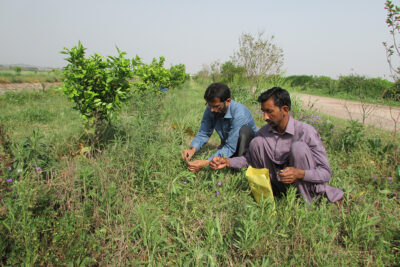
Jeff Moyer has been with The Rodale Institute for over 40 years starting as a farm laborer and currently as its CEO. Jeff designed and built out the roller crimper, an instrument that makes it possible for organic farmers to minimize or eliminate tillage, a practice that damages the soil. Jeff has also been involved in Rodale’s long-term Farming Systems Trial that provides rigorous scientific data proving the benefits of organic agriculture.
ARTY MANGAN: J.I. Rodale once said,“Healthy soil equals healthy food equals healthy people,” but the USDA reports that the nation’s soils are becoming increasingly deficient in vital nutrients. What’s happening with agricultural soils?
JEFF MOYER: The big problem is that we’ve never focused on the idea of healthy soil. J.I. Rodale was making references to healthy soils back in 1942. He was absolutely correct in saying that the health of humans is directly connected to the way we treat our soil. Now The Rodale Institute has added the words “healthy planet.” Conventional farming is narrowly focused on yield. Yield, not quality, is the metric used to judge the success of almost all farm operations in this country and around the world. We know that a good bit of the farm acreage between me in Pennsylvania and you in California is made up largely of corn and soybean. Corn and soybeans are planted in the spring and harvested in late summer, but the rest of the year the ground is bare, and nobody thinks about the health of the soil; it’s just how many tons or bushels of corn and soybeans can be produced and how cheaply it can be done. Any time you set up just one metric as your measurement of success, you’re doomed to failure because you have to look at the entire system.
As a society and a farm community, focusing on yields has created a lot of problems; the health of our soil is declining. As the health of our soil declines, the nutritional value of our foods declines because if it’s not in the soil, it can’t be in the food. Seeds and plants don’t make minerals; they just take them out of the soil and put them into a form that you and I and animals can consume. Likewise, if a contaminant is in the soil, that ends up in the food, and, of course, it ends up in us. By focusing on the soil and soil health, we stand a much better chance of producing healthy populations of people and a healthy planet.
ARTY: The Rodale Institute has been a pioneer in advancing organic practices, and in the 1990’s you were part of the process that developed national organic standards, but now Rodale is promoting the concept of regenerative agriculture. Why has it become necessary to go beyond organic?
JEFF: In the 1980s, much of the world was focusing on the words “sustainable” and “sustainability,” but sustainable is a weak word when you look at it in the context of agriculture because to sustain something is to maintain a status quo, It’s difficult to have something static in a living biological system. It’s either improving or degrading. It won’t stand still. That’s why Bob Rodale began using the word “regenerative.” So now at Rodale, we’re focusing on regeneration. We want to improve the resources that we use to produce food and fiber instead of degrading them. Our goal is to improve the soil’s health while we use it. And we can do that because the soil is based on biology.
We can actually improve the soil while we use it, and we can produce all the food that this planet needs to feed a growing population. In fact, it’s the only way to can feed an expanding population. The conventional system, has not, and will not be able to sustain a healthy population of humans on this planet. Organic systems and organic regenerative systems are the only systems that can do that.

ARTY: But organic hasn’t completely fulfilled its promise in that regard, otherwise you wouldn’t be pushing for this new standard, a regenerative agriculture certification.
JEFF: There is a lot of science in the last 20 or 30 years that shows us we can move the needle on organic farther and faster, but the current organic standard doesn’t really allow for that. What we have now is a baseline minimum standard. As long as you meet that standard, you’re in the club, you get your organic certification. So, the goal financially, for many organic farmers, is to get as close to that standard as you can without going under it, but there’s no incentive to get better. The federal law, the Organic Food and Fiber Production Act of 1990, mentions soil health, but the USDA standards for soil health in the regulations are very weak. They’re also very weak in the area of animal welfare, and they’re completely silent on the issues of social justice and fair conditions for farm workers.
With regenerative organic certification, you must first be certified organic. That’s a minimal starting point, but we believe that in order to be completely regenerative, you have to include those other criteria. We know that aware consumers go to the marketplace with a suite of values, not just one individual value. While organic may be important to them, so is social fairness, so is animal welfare, and so is soil health. And yet the organic standard is very quiet about those things. What that means is we’re either forcing farmers to have multiple certifications to satisfy the consuming public, or we’re asking consumers to choose between values that may be equally important to them in their purchasing decisions.
We feel that organic regenerative certification can include all of those things that are important to the public. It will be more cost effective for those farmers who want to do that, and more cost effective for consumers. We can move the needle farther and faster by giving consumers the products they want for their personal health, as well as products they feel good about in terms of environmental impact. A truly regenerative system can regenerate the health of the soil and of the consumers who purchase the products. It can also regenerate the spirit of farmers and their communities.
ARTY: Some people say, referring to certification, that regenerative agriculture shouldn’t be an exclusive club, that there shouldn’t be barriers to entry. The argument is that we need large scale Midwestern farmers to adopt regenerative practices, and if you mention the word organic, they’re going to slam the door in your face.
JEFF: We understand that, but we firmly believe that true leadership sets high standards. We don’t want to be so far out in front of the masses that they can’t see where we are, but as more and more of the industry begins to gravitate towards organic, we really believe the time is right now to move the bar to a higher level.
As the industry grows and matures and puts products on the shelf that consumers who demand a high standard want, we believe the entire industry is going to move. When BMW invented disc brakes and put them on cars, everybody looked at that and realized that it’s a better way to stop cars. Now every car and bicycle has disc brakes because everyone followed the engineering leaders. Why would anyone make drum brakes anymore? No one would buy that car. I have a ’59 Chevy. It has drum brakes. When you push on the brake pedal, you’re pushing and praying at the same time hoping it will stop.
We know that whenever an industry leader sets a high standard, it forces the entire industry to move in that direction. Will every farmer in the Midwest become certified regenerative organic? No. But will many of them adopt regenerative principles and begin to move in that direction? Yes. So, if every acre of land between you and me this fall gets planted with a cover crop, I’ve done my job. Even if they’re not organic or regenerative, we’ve improved the biology of the system, we’ve sequestered more carbon, and we’ve brought more life back into the soil. It’s going to take time, but over time, everyone will become regenerative organic because it is the future, and it is the direction in which we have to go.
ARTY: There’s a lot of conversation around agriculture’s role in climate change, and how it can be a part of the solution.
JEFF: Rodale Institute is in the process of writing a climate paper to be a sequel to our carbon paper, which we wrote about six years ago, and which has elicited a lot of interest around the world because of the bold stance we took. We have the science that showcases how the way we farm can have a very positive impact on climate.
For too long, farmers have not been considered part of the problem. If you’re not considered part of the problem, then you cannot be considered part of the solution. Agriculture and managed soils hold one of the keys to reducing CO2 levels in the atmosphere because the soil is really the only economical sink that we have for pulling atmospheric carbon out of the air and sequestering it long term. There is a magical, wonderful process called photosynthesis that does that for us. If you or I had invented photosynthesis, we’d be Nobel Prize winners, and we’d be touted as the greatest heroes the planet has ever seen. And yet because it happens naturally, we take it for granted and we haven’t put it to work. All the carbon that is pumped out in the form of coal was sequestered by the process of sunlight on plant leaves.
The more we can cover the ground with something growing, the more we can pull carbon out of the atmosphere and sequester it in the soil. If we can do that, we’re going to use less water. Irrigation rates go down when you start managing plant cover on the soil. All these things are interconnected.
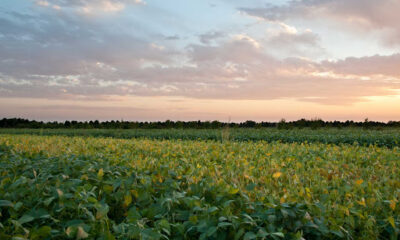
ARTY: You mentioned soil as the most economical carbon sink that we have, and there’s science to back that up, and yet there are people who are dismissing the ability of soil to significantly draw enough carbon to help heal the climate.
JEFF: I think they’ve bought into a false narrative. They’re looking at the predominant production practices in place across the world and saying those soils cannot sequester carbon under that management, and they are absolutely correct. If you talk to the world’s leading scientists on carbon sequestration, they will tell you that conventional, corn planting across the United States sequesters no carbon. What we’re talking about is radically changing the entire production system to focus on the soil not on the crop, and you begin to do that with the goal of making people healthy and making the planet healthy. By focusing on the soil, the whole world changes, and then carbon can be sequestered.
If you look at our system of livestock production in large feedlots across the Southwest, where they have taken feedstock grains out of the bread basket of the country and are sending them to feedlots in Kansas or New Mexico or Arizona, the manure never goes back to where the feed was grown. So, carbon goes in one direction and it cannot be sequestered, but if you focus your energy on carbon then what you should be doing is growing grass. One-third of Iowa, Indiana, Illinois and Ohio should be in grass. The animals shouldn’t be in the arid Southwest; they should be out in those states walking around the countryside moving across a landscape on their own four legs eating grass.
Maybe we’d have a little less biofuel, but that’s okay with me. We don’t really need ethanol. The animals would be healthier, people would be healthier, the soil would be healthier, and we’d sequester carbon so the planet would be healthy. So if you look at the current feedlot system and say it doesn’t sequester carbon, you are absolutely correct, but that’s not what we’re suggesting. We’re suggesting rewriting the rules for how we farm. Anytime you do that, people who are making money with the system the way it is will put out papers saying it cannot work.
ARTY: One of the principles of regenerative agriculture is the idea of mimicking nature. How does regenerative agriculture mimic nature?
JEFF: It mimics nature, but it doesn’t try to copy nature. It looks at a natural system and tries to identify its strengths and weaknesses. We have to ask how can we superimpose a population of seven to nine billion people onto natural ecosystems and make it work. We know we’re going to have to muck with the system a little bit. The landscape of the Midwest doesn’t want to be corn and soybeans. It wants to be either tall grass or short grass prairie, but people are not inclined to eat grasses. We’re not suggesting we put three million bison on the prairies and have Native Americans manage them. That was a system that worked in the past. It doesn’t work for where we are as a society and a planet today, but we still want to look at nature and get grass back into this system. That’s how soils are built. They’re built with grass. So, we need more grass and more animals in the system. Raising grasses on a prairie landscape is mimicking nature.
We also have to change our diet. Our diets should not be so heavily focused on meat. We need to reinvent ourselves as dieticians and nutritionists. The Rodale Institute recently wrote a white paper called The Power of the Plate promoting a whole-food, plant-based diet.
We just opened up a research station in Iowa, and one of the reasons we did that is because it’s very difficult to buy any food that was produced in Iowa. Iowa is sitting on some of the best farmland in the world with a climate that in the summer can produce almost any crop you want, and yet there’s no food being produced there for local consumption. So, Iowa is a food desert. That’s almost criminal. It’s certainly insane that Iowa is a net importer of food. It just doesn’t make any sense. So how do we get more of our landscape involved in real food production?
I think the USDA says that we use about to three percent of our landscape for fruits and vegetables. The rest is in commodity crops that can be produced cheaply, stored economically for the long term, and torn apart chemically as ingredients for processed food that ultimately makes people sick. That’s inherently wrong.
ARTY: Another principle of regenerative agriculture is biodiversity. Why is biodiversity important?
JEFF: We talk about biodiversity above ground, but we focus a lot on the biodiversity of micro-organisms below the ground, in the soil. We know that in order for any system to function in a biological manner, it has to be diverse. We don’t fully understand the complexity and the diversity that takes place below the soil, but we know we can manage it and have an impact on it, positive or negative, based on how we farm. When we have more diversity, we build resilience into our systems.
The Rodale farming system trial, which is 40 years old, compares side-to-side a conventional production system to an organic system. For four decades, it’s been managed with the same equipment for both the organic and conventional production models. When we look at the microbial life of the soil on the conventional side, we still have a very large pool of microbes but within a very narrow spectrum of diversity because conventional farming self-selects for microbial life that can live in the chemical soup that that system dumps into the soil. It can live with salt from fertilizers. It can live with pesticides. It can live with herbicides. It’s not particularly useful in making people healthy or in facilitating plant health, which is why we have to put a lot of nutrition into the plant. The more you use that system, the more fertilizer you need because the soil becomes inherently dead.
On the organic systems, we may have the same sized pool of microbial life, but the complexity and the diversity is off the chart, and for much of that we don’t even understand what’s happening. It’s very dynamic. It’s changing all the time. But within that complexity and diversity, we can become very efficient and effective at growing crops without chemical inputs.
Once you start using chemicals in your system, you need more. In an organic system, we’re invested in soil health. There’s more diversity within the system, there’s more diversity within the people involved in the system, there’s more diversity above ground. You need crop rotations to be a regenerative organic farmer. We have farmers that call us and they say, “I want to adhere to the new regenerative organic standard, but I just want to grow soybeans on 3,000 acres. That’s not going to work. You’re going to have to diversify your crop rotation.
So, we’re working with some of the large global players in the world who are buying grains and saying you’re going to have to diversify your buying practices. You’re going to have to buy the spectrum of crops a farmer produces, so farmers can have longer crop rotations because the more diversity they grow, the more resilient and stable the system gets. We’re trying to make the global commodity processing and trading companies understand that they have to change the marketing. We have to change all these ancillary systems that are built around agricultural production.
It’s not impossible. We can do it if we choose to do it, if we as a society say that’s what we want to do. There will be opportunities for everybody to make a living in this system and to become healthier while we do it. We can heal the planet and we can heal people by doing it.
Author:
Arty Mangan for Bioneers







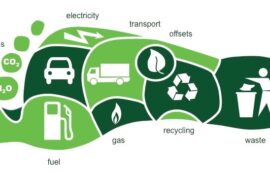

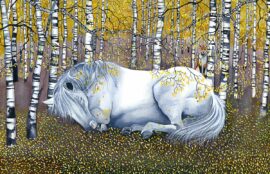








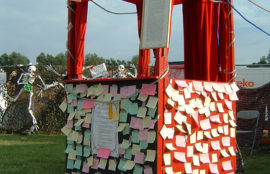

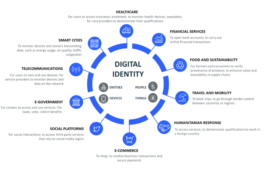

Sorry, the comment form is closed at this time.